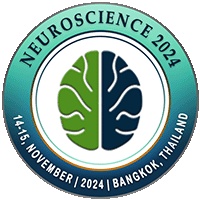
Vittorio Calabrese
University of Messina, ItalyTitle: Bio-psycho-social model of late dementia
Abstract
The syndromic structure of dementia includes neurocognitive deficits, psychopathological disorders, and deficits in household instrumental activities. The biopsychosocial model shows in dynamics the interaction of biological, psychological and social systems in the formation of each structural component of dementia. Damage to synapses, neurons, glia, blood vessels due to amyloidogenesis, taupathy, damage to mitochondria, neuroinflammation, etc. constitute the anatomical substrate of a cognitive defect. At the stage of dementia, the cognitive reserve is destroyed. Cognitive deficits include a violation of the differentiation of incoming exteroceptive and interoceptive signals, an incomplete deficit in the perception of signals, compensatory “meaningful” distortions followed by an incorrect reaction, a decrease in the speed of information processing, low consolidation of the mnestic trace, insufficiency of regulatory processes. With constantly incoming information, the number of “unprocessed” and “unanswered” signals increases, which correlates with an undifferentiated stress-behavioral response. At each discrete moment in time, the patient's personality determines an individual-interpretative-conditional reaction (delusion, anxiety, depression, etc.). Participation in the process of interaction with the patient of an informal caregiver introduces into the process of their interaction a component of partiality, emotional involvement and a conflict of expectations in the caregiver. The caregiver is faced with excitement, resistance, verbal aggression from the patient. Destabilization of the caregiver's mental state increases the risk of tension in the caregiver's affective reaction. The phenomenon of "Expressive emotions" with high intensity and speed of verbal information per unit of time is being formed, the number of additional information-noise verbal signals is increasing. This makes it difficult for a person with dementia to decipher such information. This again increases excitation, anxiety, agitation in a patient with dementia, reduces neurodynamic functions, and increases the energy deficit of the brain. Thus, each clinical symptom in dementia develops through the interaction of biological, psychological and social systems.
Biography
Professor Vittorio Calabrese is a member of the editorial board of several highly peer-reviewed journals. His research focuses on the role of free radicals and antioxidants in the development of human diseases, in particular Alzheimer's disease and other brain disorders. His research interests include the role of oxidative stress and mitochondrial dysfunction in aging, neurodegenerative disorders and longevity, proteomics and redox proteomics, Hormesis and Vitagenes heat shock signaling pathway in neurodegeneration. The results of his research are reflected in more than 250 scientific articles published in leading international journals and widely cited (about 16563 citations in total), with an hIndex of 80 (ISI). Deposited patents on the use of curcumin and its derivatives for the treatment of neurodegenerative diseases and the neuroprotective effects of polyphenolic compounds.

